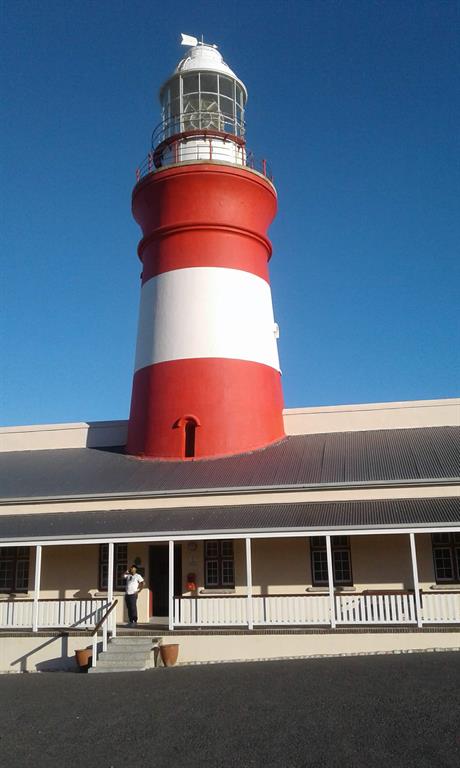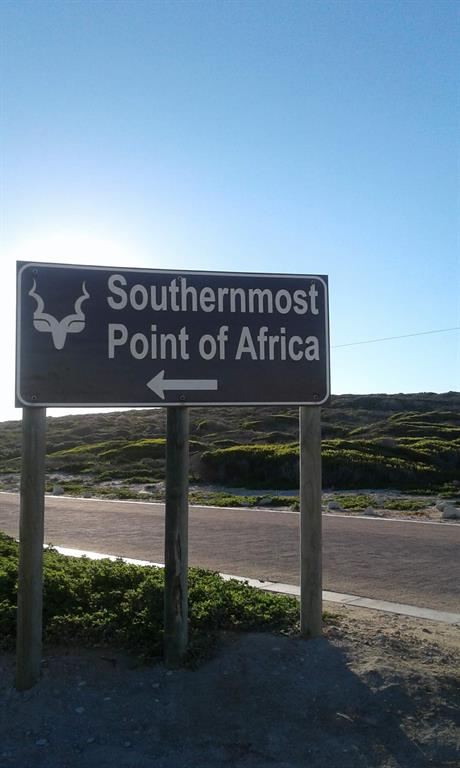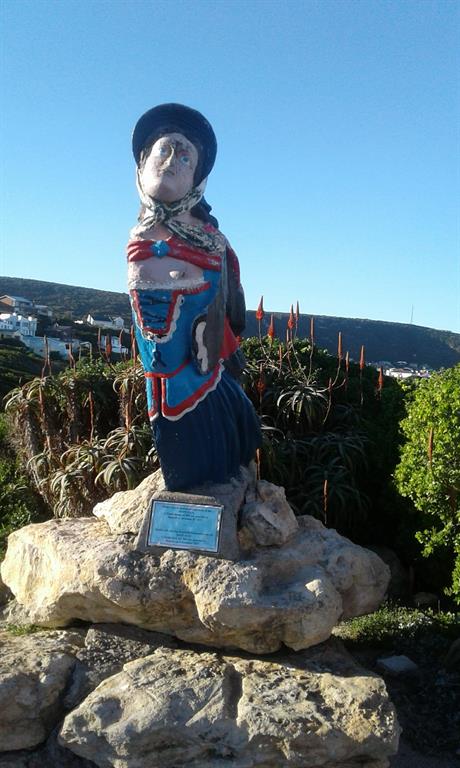Where two oceans meet
Exploring the southernmost tip of Africa
Cape Agulhas is the meeting point of the Atlantic and the Indian Ocean, which coincides with the convergence of the warm Agulhas Current and the cold Benguela Current. This produces one of the best fishing grounds - and most turbulent seas. The reefs of the Agulhas Bank, a unique geographical formation that stretches across the continental shelf for 800 km, further adds to the treacherous sailing conditions.
Around 130 shipwrecks have been recorded around Cape Agulhas since 1673, making this coastline notorious as a “ship graveyard”. It was not until 1840 however, that at a public meeting in Cape Town the decision was taken to raise money for the construction of a lighthouse. Remarkably, funds for the effort to reduce the danger of sailing around the tip of Africa also came from cities in India and Indonesia as well as St. Helena.
The land-based lighthouse was completed nine years later. The tower is 30 meters high and sits on top of the lighthouse keeper's former apartment, which is quite spacious. Today it houses a restaurant, a souvenir shop and a small museum. Anybody is welcome to climb the 71 steps to the top of the lighthouse.
The history of shipping round the tip of Africa is documented at the Shipwreck Museum in Bredasdorp, 30 kilometres north of Agulhas. Objects salvaged from wrecked ships found their way into the households of the farming communities. Foreign ships and their surviving passengers and crews left their mark on the development of the Strandveld area.
Cape Agulhas, best known for its lighthouse, is off the trodden paths and not part of the typical tourist itinerary. Yet, situated around 220 kilometres southeast of Cape Town it is a great destination even for a day-trip. Better still, choose from the many accommodation options not only in Agulhas but also in Suiderstrand, Struisbaai or even Arniston for time to relax at a pristine stretch of beach or you may choose to explore Agulhas National Park.
The Agulhas Plain forms part of the Cape Floral Kingdom, famous for its extraordinary floral diversity. Agulhas National Park is certainly not known as a habitat for mammals, but it boasts a wealth of birdlife, especially in the wetlands and at the salt pans.
A 5.5 kilometre circular hiking trail with numbered route markers starts at the Meisho Maru shipwreck. The first half of the walk follows the coastline - with fynbos, ancient fish traps and freshwater springs along the way - before it turns inland and leads up to a ridge with grand views of rock formations and the coastline.
In this spectacularly beautiful landscape the Japanese trawler Meisho Maru ran aground early one morning in November 1982. The crew was able to leave the sinking ship unharmed, but it later broke into pieces with only the bow remaining above water, turned by powerful waves to face seaward. The walk from the shipwreck to the lighthouse is roughly two kilometres long.
There is another, more challenging hiking trail of about 10.5 kilometres, which takes between four and five hours to complete. It is also a circular route, with a viewpoint on top of Sandberg. Two shorter routes are also available.
Some of the oldest human bones and artefacts have been found in the caves of the cliff along this coastline. The lack of shellfish in some layers at those sites has puzzled archaeologists for years. The cave-dwellers apparently hunted game animals that would be found further inland. The solution to the puzzle is fascinating: During most of the Pleistocene Epoch, which began about 2.6 million years ago, the caves were not located along the coastline. The most recent Ice Age occurred in the Pleistocene and glaciers covered vast parts of the Earth. Due to the low sea levels the continental shelf was exposed. The tip of Africa was probably some 250 km further south. And the now submerged land was a lush green world teeming with game.
Around 130 shipwrecks have been recorded around Cape Agulhas since 1673, making this coastline notorious as a “ship graveyard”. It was not until 1840 however, that at a public meeting in Cape Town the decision was taken to raise money for the construction of a lighthouse. Remarkably, funds for the effort to reduce the danger of sailing around the tip of Africa also came from cities in India and Indonesia as well as St. Helena.
The land-based lighthouse was completed nine years later. The tower is 30 meters high and sits on top of the lighthouse keeper's former apartment, which is quite spacious. Today it houses a restaurant, a souvenir shop and a small museum. Anybody is welcome to climb the 71 steps to the top of the lighthouse.
The history of shipping round the tip of Africa is documented at the Shipwreck Museum in Bredasdorp, 30 kilometres north of Agulhas. Objects salvaged from wrecked ships found their way into the households of the farming communities. Foreign ships and their surviving passengers and crews left their mark on the development of the Strandveld area.
Cape Agulhas, best known for its lighthouse, is off the trodden paths and not part of the typical tourist itinerary. Yet, situated around 220 kilometres southeast of Cape Town it is a great destination even for a day-trip. Better still, choose from the many accommodation options not only in Agulhas but also in Suiderstrand, Struisbaai or even Arniston for time to relax at a pristine stretch of beach or you may choose to explore Agulhas National Park.
The Agulhas Plain forms part of the Cape Floral Kingdom, famous for its extraordinary floral diversity. Agulhas National Park is certainly not known as a habitat for mammals, but it boasts a wealth of birdlife, especially in the wetlands and at the salt pans.
A 5.5 kilometre circular hiking trail with numbered route markers starts at the Meisho Maru shipwreck. The first half of the walk follows the coastline - with fynbos, ancient fish traps and freshwater springs along the way - before it turns inland and leads up to a ridge with grand views of rock formations and the coastline.
In this spectacularly beautiful landscape the Japanese trawler Meisho Maru ran aground early one morning in November 1982. The crew was able to leave the sinking ship unharmed, but it later broke into pieces with only the bow remaining above water, turned by powerful waves to face seaward. The walk from the shipwreck to the lighthouse is roughly two kilometres long.
There is another, more challenging hiking trail of about 10.5 kilometres, which takes between four and five hours to complete. It is also a circular route, with a viewpoint on top of Sandberg. Two shorter routes are also available.
Some of the oldest human bones and artefacts have been found in the caves of the cliff along this coastline. The lack of shellfish in some layers at those sites has puzzled archaeologists for years. The cave-dwellers apparently hunted game animals that would be found further inland. The solution to the puzzle is fascinating: During most of the Pleistocene Epoch, which began about 2.6 million years ago, the caves were not located along the coastline. The most recent Ice Age occurred in the Pleistocene and glaciers covered vast parts of the Earth. Due to the low sea levels the continental shelf was exposed. The tip of Africa was probably some 250 km further south. And the now submerged land was a lush green world teeming with game.








Kommentar
Allgemeine Zeitung
Zu diesem Artikel wurden keine Kommentare hinterlassen